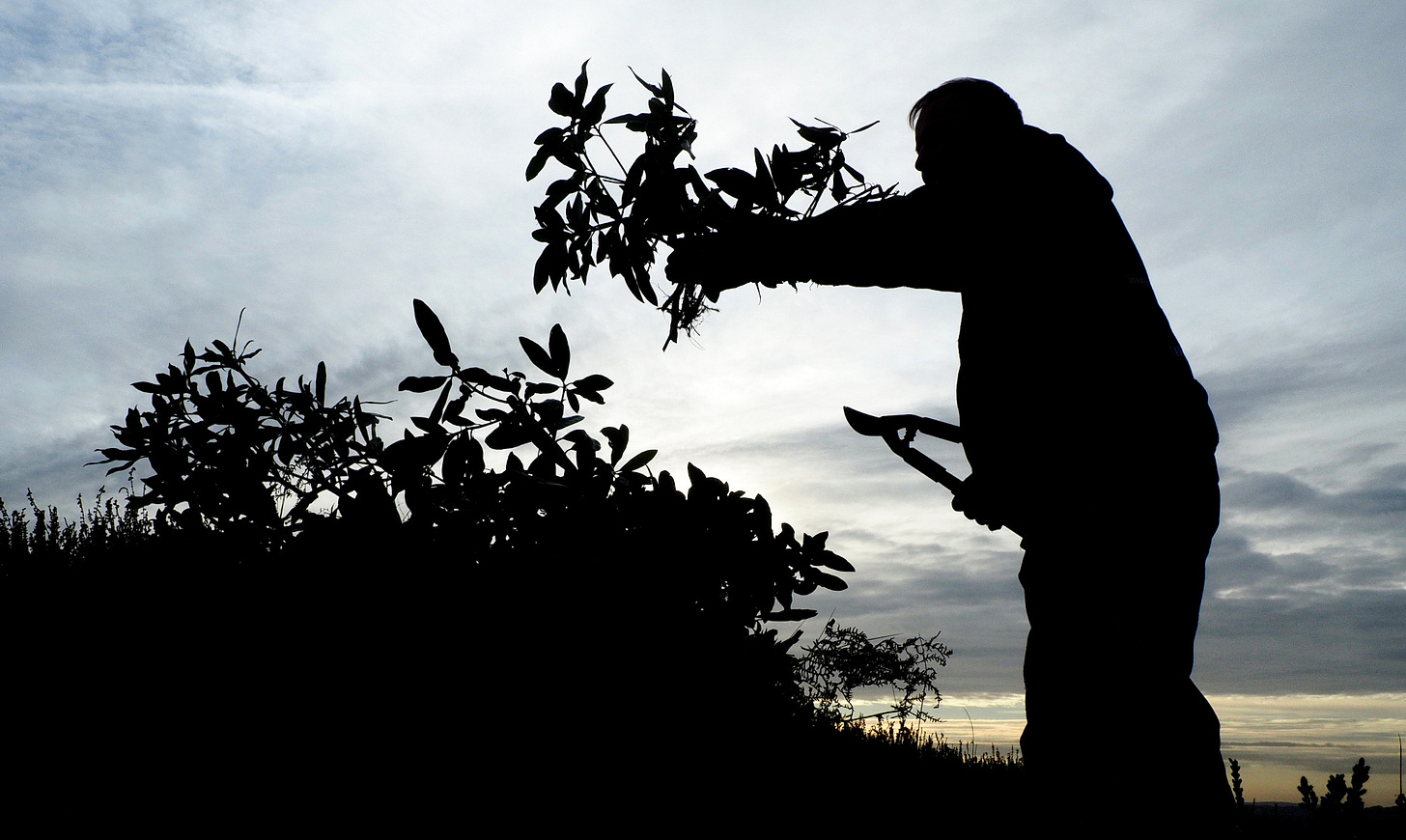Purple Monsters
Loved by tourists and bumblebees, loathed by sheep and conservationists. Is the garish Rhododendron ponticum really an invasive foreign thug?
It’s big, it’s green and purple, and it does its best to stifle everything around it. To many, it’s an alien monster on the loose in our countryside.
A Peak District conservationist described how unchecked Rhododendron ponticum “romps away” on acidic peaty soils like we have all over the Peak District. “You can watch a stretch of moors over ten years and see rhododendrons marching across like a gang of triffids.”
Gangs of volunteers and rangers are attacking the Iberian invader with hedge loppers and spades, doing their level best to clear out invasive trees and bushes set loose in the British countryside over 200 years ago.
(Collectors had spotted the trophy plant in London a few years after Kew Gardens opened in 1759, and wealthy Victorians then imported seeds and cuttings from Portugal and around the Mediterranean to provide cover for game birds and ‘to ornament our houses in the Spring,’ as a contemporary magazine put it.)
But rhododendrons are spectacular, and places like Longshaw and Whirlow Brook Park have grown to expect rhododendron visitors from April to June. And if you look back far enough, maybe it shouldn’t be seen as a foreign invader at all.
So are there really upsides to the rhododendron? Well, maybe. I spoke to local conservationists about a plant that some still describe as a gaudy purple thug.
(The rest of this post is for our growing band of paying supporters. Hard sell moment: sign up button below. It’s £4 a month. Less than a four pack of pot noodles.)
Keep reading with a 7-day free trial
Subscribe to It's Looking A Bit Black Over Bill's Mother's to keep reading this post and get 7 days of free access to the full post archives.





